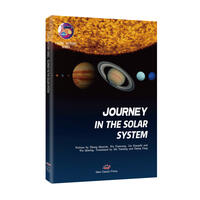
This book introduces in detail the sun and the planets of the solar system, the planets of the moon, dwarf planets, asteroids. (1) The Sun is of moderate size, and its core region is sufficiently pressurized and warm for hydrogen atoms to undergo a thermonuclear reaction that can last for another four billion years to become helium. (2) Some of the planets in the solar system, like the sun, are composed of gas, such as Jupiter, Earth, Uranus, and Neptune; Some are Terrestrial planets, such as Mercury, Mars, Earth, and Venus. You can land on Terrestrial planets, but you can't land on gaseous planets. (3) The most distinctive planet in the solar system is Jupiter. Jupiter is a giant gaseous planet with gorgeous patterns and the beautiful Great Red Spot. The composition of Jupiter is very similar to that of the Sun. If Jupiter's total mass increased to 80 times what it is today, there would be enough pressure to start thermonuclear reaction. If that were the case, we would see two suns in our solar system. (4) Jupiter is also the protector of the Earth. There is an asteroid belt in the solar system. From time to time, asteroids leave the asteroid belt and may fly close to the Earth. But because of the overbearing gravity, Jupiter does protect the earth from the attack of various asteroids by diverting them to a different direction or catching them in its orbit. (5) The planets in our solar system are very different, and they all have many interesting stories, such as a day on Venus is a little longer than a year on Venus. Because Venus rotates very slowly, it takes a long time to see the sun rising in the east and setting in the west. Even if Venus goes all the way around the sun, that process is not yet complete. (6) The satellites of planets in the solar system also have many interesting facts. For example, Europa is covered in rivers and oceans of methane. Many interesting facts are introduced and described in detail in this book.